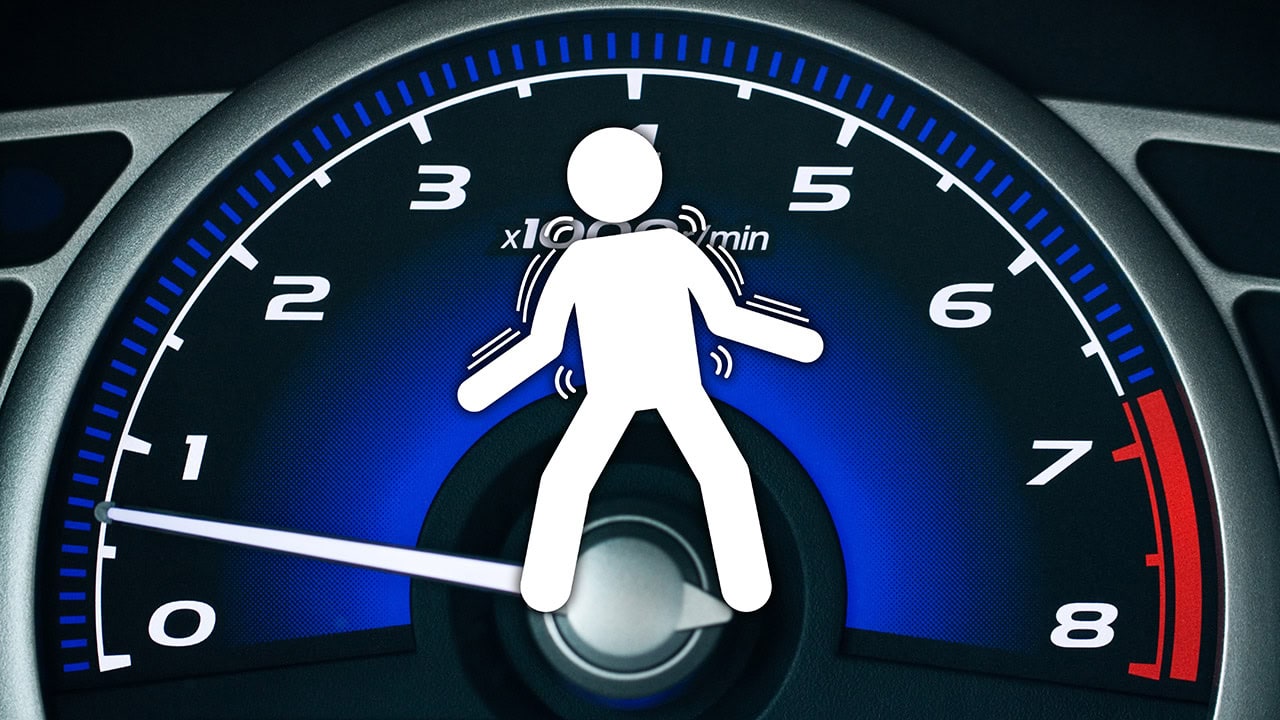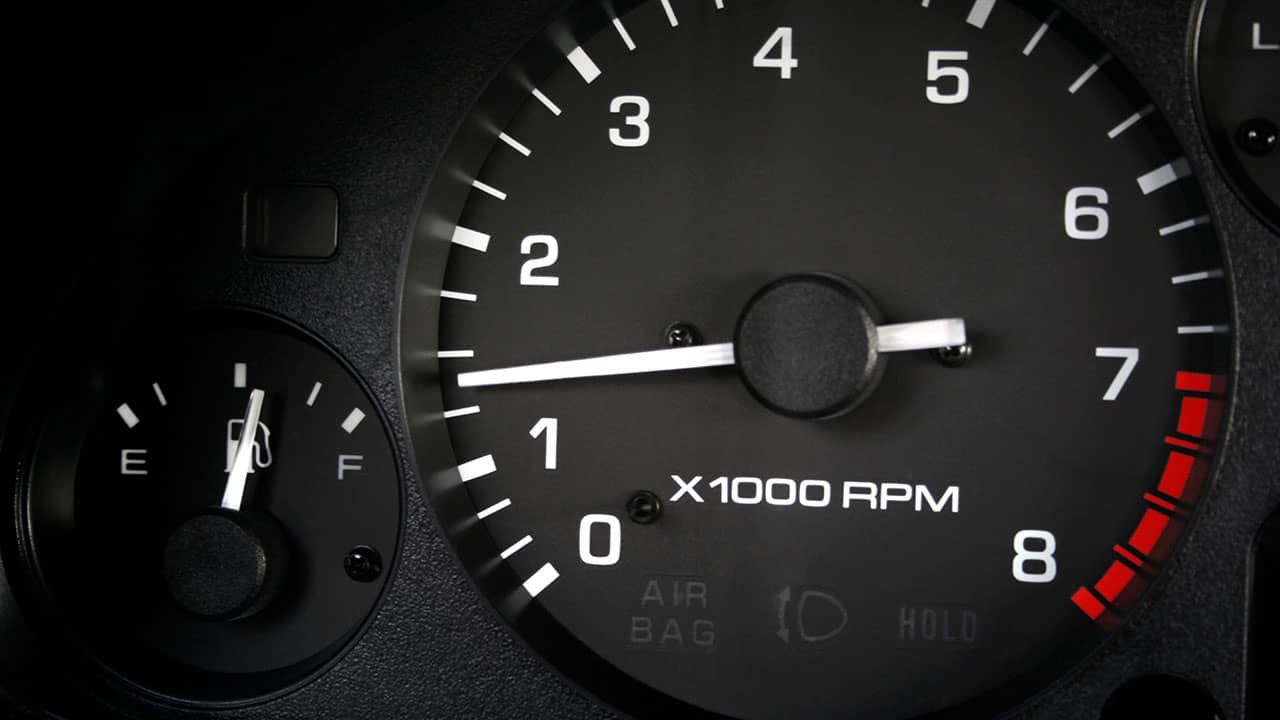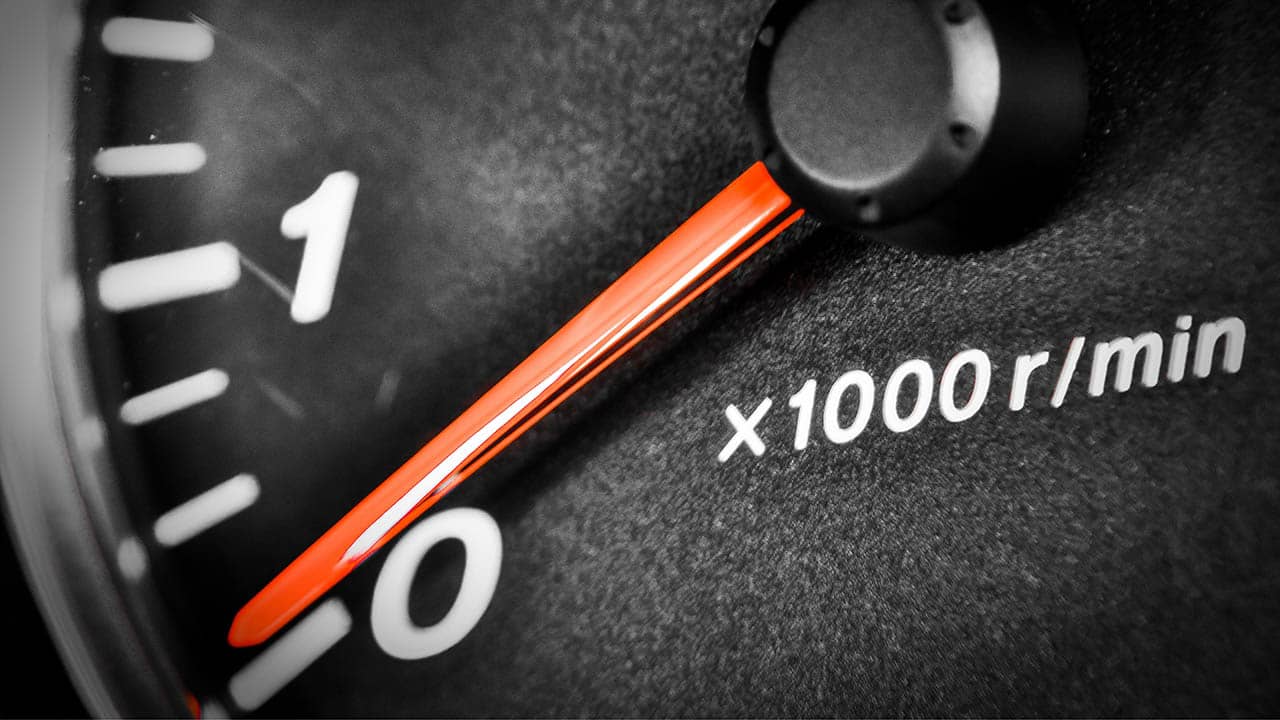Car Idles Rough When Cold
Learn why your car idles roughly when cold and discover effective solutions to smooth out your engine.

The mechanical systems in your vehicle work together to provide power, control, and reliability. Understanding how to diagnose mechanical problems helps you maintain peak performance and avoid costly breakdowns.
Your engine is an internal combustion machine that converts gasoline into rotational motion through a four-stroke cycle: intake, compression, power, and exhaust. During intake, the piston moves down while the intake valve opens, drawing in a mixture of air and fuel. The compression stroke follows, with the piston moving up and compressing this mixture to roughly one-tenth its original volume, creating heat and pressure. At the top of compression, the spark plug ignites the compressed mixture, creating a controlled explosion that drives the piston down with tremendous force. This is the power stroke that generates the engine's output. Finally, the exhaust stroke pushes spent gases out through the exhaust valve as the piston rises again.
This process repeats thousands of times per minute in each cylinder. A four-cylinder engine running at 3,000 RPM experiences 6,000 combustion events per minute across all cylinders, or 100 per second. Timing is critical. If the spark occurs too early (advanced timing), the explosion fights the rising piston, causing knocking and potential damage. If spark occurs too late (retarded timing), power decreases and exhaust temperatures increase. Modern engines use sophisticated computer controls to adjust timing dynamically based on load, temperature, fuel quality, and altitude, optimizing power and efficiency while minimizing emissions.
The transmission transfers engine power to the wheels while allowing the engine to operate in its optimal RPM range across various vehicle speeds. Automatic transmissions use fluid coupling (torque converter) and hydraulic pressure to shift between gear ratios automatically based on throttle position and vehicle speed. Manual transmissions use a friction clutch that the driver engages and disengages to select gears. Continuously variable transmissions (CVTs) use belts or chains between variable-diameter pulleys to provide infinite gear ratios within a range, keeping the engine at ideal RPM for fuel efficiency. Regardless of type, transmissions multiply engine torque at lower vehicle speeds and reduce engine RPM at highway speeds for quieter, more efficient cruising.
| Symptom | When It Occurs | Likely Cause(s) | Difficulty |
|---|---|---|---|
| Loss of Power | During acceleration | Clogged fuel filter, weak pump, plugged air filter | Medium |
| Loss of Power | Only at high RPM | Insufficient fuel pressure, ignition breakdown | Hard |
| Loss of Power | Gradual over time | Clogged catalytic converter | Hard |
| Rough Idle | Constant, smooths when driving | Vacuum leak, idle air control valve, single misfire | Medium |
| Rough Idle | Only when cold | Cold-start enrichment, thickened oil, worn parts | Easy |
| Vibration | Increases with vehicle speed | Unbalanced tires, bent wheel, worn wheel bearing | Easy |
| Vibration | Matches engine RPM | Worn engine mounts, unbalanced components | Medium |
| Poor Fuel Economy | Sudden decrease | Faulty oxygen sensors, running rich | Medium |
| Poor Fuel Economy | Gradual decline | Dirty injectors, carbon buildup, worn plugs | Easy |
| Hard Starting | When cold | Weak battery, bad coolant temp sensor | Easy |
| Hard Starting | When hot | Vapor lock, heat-soaked starter | Medium |
| Engine Overheating | In traffic/idle | Failed cooling fan, low coolant | Critical |
| Engine Overheating | At highway speed | Failed water pump, clogged radiator | Critical |
Mechanical problems announce themselves through characteristic symptoms that provide diagnostic clues. Loss of power can indicate numerous issues depending on when it occurs. Power loss during acceleration suggests fuel delivery problems (clogged fuel filter, weak fuel pump, dirty fuel injectors) or air intake restrictions (plugged air filter). Power loss only at high RPM points to insufficient fuel pressure or ignition components breaking down under high-speed stress. Gradual power loss over time often indicates a clogging catalytic converter restricting exhaust flow, essentially strangling the engine by preventing efficient breathing.
Rough running presents differently depending on the underlying cause. A consistent rough idle that smooths out when driving suggests vacuum leaks, idle air control valve problems, or a single misfiring cylinder. Rough running that worsens under acceleration indicates fuel system issues or multiple cylinder misfires. If roughness occurs only when cold and disappears after warmup, suspect problems with cold-start enrichment systems, thickened oil not reaching components quickly, or worn engine parts with excessive clearance when cold that tightens as metal expands with heat.
Vibrations provide location clues. Vibration that increases with vehicle speed, regardless of engine RPM, points to wheel-related issues: unbalanced tires, bent wheels, worn wheel bearings, or suspension components. Vibration that corresponds to engine RPM rather than vehicle speed indicates engine or accessory problems: worn engine mounts allowing excessive movement, unbalanced rotating components, or failing accessories like water pumps or power steering pumps. Vibration felt through the steering wheel specifically suggests front-end problems, while vibration through the seat indicates rear-end or driveline issues.
Poor fuel economy signals that the engine isn't operating efficiently. Sudden drops in MPG often indicate problems with oxygen sensors feeding incorrect data to the engine computer, causing it to deliver too much fuel. Gradual fuel economy decline suggests accumulated issues: dirty fuel injectors creating poor spray patterns, carbon buildup reducing compression, spark plugs worn beyond efficient combustion, or underinflated tires increasing rolling resistance. Modern vehicles display instant MPG data that helps identify when fuel consumption increases-watch for patterns that reveal the problem occurs during specific conditions like cold starts, highway cruising, or stop-and-go traffic.
Effective mechanical diagnosis follows a logical process that eliminates common causes before investigating complex possibilities. Start by gathering detailed symptom information: When does the problem occur? What were you doing when it started? Has anything changed recently? Does it happen consistently or intermittently? Intermittent problems are hardest to diagnose, so noting patterns (occurs when hot, when cold, when wet, after sitting overnight) provides crucial clues that guide troubleshooting.
Next, check the simple things first. This principle saves time and money. Before replacing expensive components, verify basics like adequate fuel in the tank (gauge failures happen), proper oil level (low oil causes numerous problems), coolant level sufficient (overheating changes symptoms dramatically), and no obvious leaks underneath the vehicle. Check for recent maintenance that might have introduced problems. New parts can be defective, or incorrect installation can create issues blamed on other systems. If problems started immediately after service, that's probably not coincidence.
Use your senses as diagnostic tools. Look for obvious problems like disconnected hoses, damaged wires, loose bolts, or fluid leaks. Listen carefully to identify where noises originate and when they occur. Smell for distinctive odors: gasoline (fuel leak), rotten eggs (catalytic converter overheating from rich mixture), burning oil (leaking onto hot exhaust), sweet smell (coolant leak), burning rubber (belt slipping), or electrical burning (short circuits). Feel for vibrations, excessive heat, or rough-running conditions that provide clues about internal problems not visible externally.
When symptoms point to specific systems, perform targeted testing rather than replacing parts randomly. If you suspect ignition problems, test for spark at each cylinder. If fuel delivery seems problematic, measure fuel pressure and compare to specifications. If compression is questionable, perform a compression test across all cylinders to identify weak cylinders. Systematic testing identifies the actual problem rather than guessing based on symptoms alone-many different failures produce similar symptoms, so testing confirms which specific component failed before spending money on repairs.
Compression testers measure cylinder pressure to reveal internal engine condition. Healthy gasoline engines produce 140-180 PSI compression depending on design, with all cylinders within 10% of each other. Low compression in one cylinder suggests problems specific to that cylinder: burnt valves, worn piston rings, or damaged head gasket. Low compression across all cylinders indicates widespread wear, possibly requiring engine overhaul. Compression testing requires removing all spark plugs and disabling the fuel system, then cranking the engine while the gauge measures peak pressure in each cylinder. This test reveals problems invisible from outside the engine.
Vacuum gauges measure intake manifold vacuum, providing insight into engine breathing and valve timing. Engines at idle create strong vacuum (17-21 inches of mercury on most engines at sea level) by pulling air through a restricted throttle opening. Steady low vacuum indicates retarded ignition timing or intake leaks. Fluctuating needle suggests intermittent misfires or sticky valves. Gradual vacuum drop during acceleration points to exhaust restrictions like clogged catalytic converters. A simple $15 vacuum gauge reveals problems that expensive scan tools might miss because it measures the physical result of combustion rather than relying on sensor data that might be incorrect.
OBD-II scanners read diagnostic trouble codes (DTCs) from the engine computer and display real-time sensor data. Basic code readers cost $25-50 and display codes that identify which systems have problems. More advanced scanners ($100-300) show live data from oxygen sensors, coolant temperature, throttle position, fuel trim adjustments, and more, allowing you to see how the engine responds to inputs. Professional-grade scanners ($500+) access manufacturer-specific codes, perform component tests, and reprogram modules, but DIYers get excellent diagnostic capability from mid-range tools. Understanding that codes indicate symptoms rather than definitive failures is crucial. A code pointing to an oxygen sensor often means the sensor is correctly reporting a rich condition caused by other problems, not that the sensor itself failed.
Mechanical stethoscopes help pinpoint noises to specific components. These inexpensive tools ($15-30) amplify sounds and use a probe to touch components, transferring vibrations directly to your ears. Press the probe against valve covers to listen for valve train noises, touch the water pump bearing housing to identify bearing whine, or place it on the transmission case to isolate gear noise. This targeted listening eliminates guesswork about noise sources, especially in crowded engine bays where sounds reflect and echo, making it difficult to locate problems by ear alone.
Certain symptoms indicate severe damage in progress that requires immediately stopping the vehicle to prevent catastrophic failure. Loud knocking or hammering sounds from the engine, especially those that increase with RPM, suggest rod bearings failing-metal-to-metal contact that will soon punch a connecting rod through the engine block, destroying the engine completely. If you hear knocking, pull over safely and shut down immediately. Continuing to run a knocking engine turns a $500 bearing replacement into a $4,000 engine replacement within minutes.
Metal shavings in the oil visible on the dipstick or oil cap indicate internal wear producing debris that will accelerate damage throughout the engine. Fresh oil appears amber and translucent; oil with metallic particles looks darker and contains visible specks or shiny flakes. This debris circulates through bearings, scratching surfaces and creating more wear in a destructive cycle. If you discover metal in the oil, have the vehicle towed rather than driven-operating with contaminated oil ensures complete engine failure.
Blue smoke from the exhaust means the engine burns oil, indicating worn piston rings, valve stem seals, or cylinder wall damage. Thick blue smoke on cold starts that clears after warmup suggests valve seals (oil leaks past seals when the engine sits, then burns off at startup). Continuous blue smoke that worsens under acceleration indicates worn rings allowing oil to enter the combustion chamber. While engines can run with minor oil consumption, heavy smoke means significant wear requiring eventual engine work. White smoke suggests coolant burning (head gasket failure), while black smoke indicates excessive fuel (running rich). Each color provides diagnostic information about what's entering cylinders that shouldn't be there.
Sudden loss of coolant, especially accompanied by steam from under the hood or sweet smell, indicates cooling system failure in progress. Overheating causes rapid, expensive damage. Aluminum cylinder heads warp within minutes at extreme temperatures, creating head gasket failures that cost $1,500-2,500 to repair. If the temperature gauge reads high or the warning light illuminates, pull over, shut down, and let the engine cool for at least 30 minutes before attempting to add coolant. Never remove the radiator cap when hot-pressurized coolant at 230°F will erupt violently, causing severe burns. Towing a vehicle with cooling system failure costs $100; replacing a warped head costs $2,000.
Most mechanical failures develop gradually and can be prevented through attention and maintenance. Monitor fluid levels weekly by checking oil, coolant, brake fluid, power steering fluid, and transmission fluid. Falling levels indicate leaks or consumption that will cause problems if ignored. Oil that turns black quickly or smells burnt suggests overheating or contamination requiring investigation. Coolant that appears rusty indicates corrosion eating the system from inside. Brake fluid that's dark brown instead of amber has absorbed water, reducing boiling point and risking brake fade or component corrosion.
Follow manufacturer service intervals for timing belt replacement. Typically 60,000-100,000 miles depending on engine design. Timing belts wear invisibly and fail suddenly, causing engine damage ranging from bent valves ($1,500 repair) to destroyed pistons ($4,000+ repair) on interference engines where pistons and valves occupy the same space at different times. Spending $500-800 proactively replacing the timing belt every 100,000 miles prevents catastrophic damage. Some engines use timing chains designed to last the engine's lifetime, but even chains need occasional inspection for wear and proper tensioner operation.
Address small problems before they escalate. A minor oil leak that drips a few spots becomes a major leak that depletes oil levels, leading to bearing damage. A rough idle from a single misfiring cylinder puts extra stress on catalytic converters, eventually damaging them and turning a $100 spark plug issue into a $1,000 catalyst replacement. A slight vibration from unbalanced tires accelerates suspension wear, transforming $50 of wheel balancing into $500 of suspension repairs. Fixing problems when small and inexpensive prevents the cascade of damage that results when failed components stress other systems beyond their design limits.

Learn why your car idles roughly when cold and discover effective solutions to smooth out your engine.

Understand why your engine struggles under full acceleration and get expert tips to restore full power.

Learn the sounds, smells, and performance changes that reveal your engine is starting to go bad before costly repairs stack up.

Learn why your engine hits a wall at 4000 RPM and how to diagnose and fix this power limitation issue.

Fix your car's high idle RPM problem with our comprehensive troubleshooting guide and expert solutions.

Is your car shaking or losing power? Learn to diagnose engine misfires yourself with this step-by-step guide.

Solve the mystery of why your car's RPM drops while idling and learn how to fix this common issue.